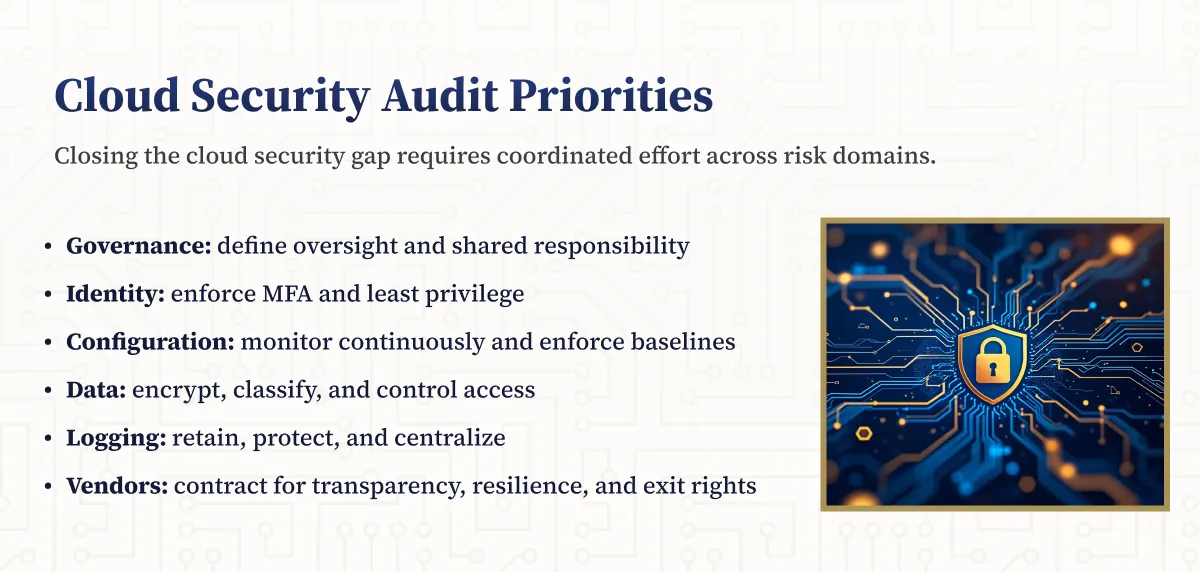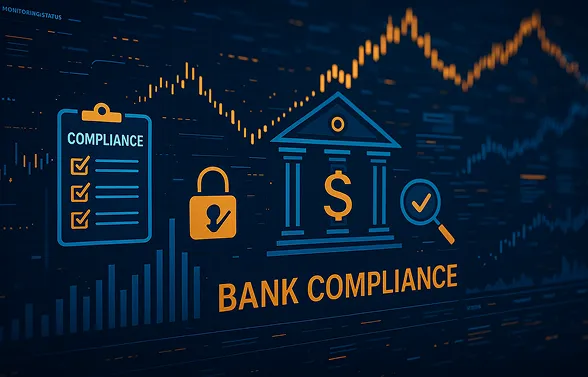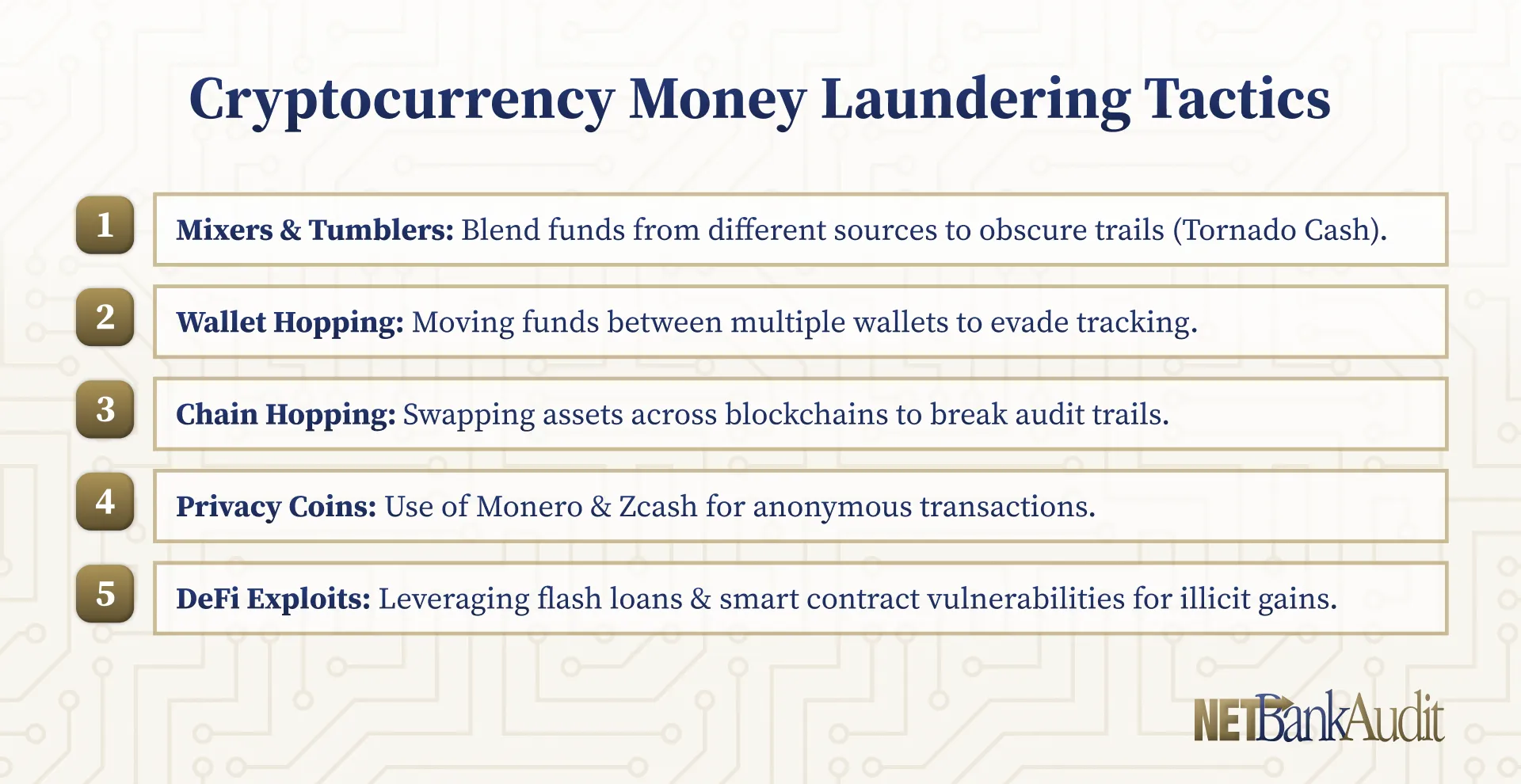Financial crime schemes, from large-scale money laundering to sanctions evasion, are evolving at a pace that challenges even the most sophisticated compliance programs. As technology proliferates and criminals adopt ever more cunning methods, regulatory bodies worldwide continue to tighten oversight of Bank Secrecy Act (BSA), Anti-Money Laundering (AML), Countering the Financing of Terrorism (CFT), and Office of Foreign Assets Control (OFAC) frameworks.
Robust risk assessments stand at the core of effective compliance, enabling financial institutions to identify inherent vulnerabilities, test the efficacy of their controls, and pinpoint the residual risks that demand further attention. This article provides a deeply researched roadmap to fortifying your institution’s risk assessment processes by weaving together best practices, real-world examples, and authoritative guidance from global regulatory entities.
The Evolving Money Laundering Threat Landscape
The modern financial ecosystem is marked by cross-border transactions, digital service channels, and emerging technologies. Although these developments have fostered greater convenience and efficiency, they have simultaneously created new avenues for exploitation by bad actors. According to the United Nations Office on Drugs and Crime, an estimated 2–5% of global GDP, roughly $800 billion to $2 trillion, is laundered each year. Meanwhile, the Thomson Reuters Cost of Compliance 2023 report indicates that 76% of compliance professionals cite escalating regulatory scrutiny as the main driver for enhancing risk assessment processes.
AI, Crypto and Machine Learning Technology Implications
Criminals exploit everything from prepaid cards and wire transfers to sophisticated trade-based money laundering (TBML) techniques. Cryptocurrencies and decentralized finance (DeFi) platforms offer novel opportunities for laundering illicit proceeds, while advanced cyber-fraud tactics, such as synthetic identity creation, complicate Know Your Customer (KYC) protocols. Heightened geopolitical tensions also add layers of complexity to sanctions enforcement, making robust OFAC compliance more critical than ever.
Key Components of BSA/AML/CFT and OFAC Risk Assessments
This section delves deeper into the pillars that inform BSA/AML/CFT and OFAC risk assessments. From foundational regulatory mandates to the more granular objectives of an assessment framework, each component underscores the need for a robust, risk-based approach.
Regulatory Foundations
Financial institutions operate under multiple layers of domestic and international regulation designed to combat financial crime and enforce sanctions policies. For in-depth analysis of these regulations, read our Guide to BSA, AML, CFT and OFAC Regulations
BSA/AML/CFT Requirements
- Bank Secrecy Act (BSA): Requires U.S. financial institutions to maintain records and file reports on certain transactions, aiding government agencies in investigating financial crimes. Its implementing regulations mandate a comprehensive AML program, typically including internal policies, designated compliance officers, ongoing training, and independent testing.
- AML/CFT International Standards: The Financial Action Task Force (FATF) issues global recommendations, which many jurisdictions adopt as legislation or regulatory guidance. FATF emphasizes a risk-based approach, urging institutions to identify and mitigate their highest-risk areas first.
- Enhanced Due Diligence (EDD) Regulations: Policies around politically exposed persons (PEPs), high-risk jurisdictions, and complex corporate structures often mandate deeper scrutiny. The EU’s Sixth Anti-Money Laundering Directive (6AMLD) intensifies criminal penalties and clarifies money laundering offenses.
OFAC Compliance
- Sanctions Programs: Administered by the U.S. Treasury’s Office of Foreign Assets Control (OFAC), sanctions target specific countries, regimes, and individuals. Institutions must block property of sanctioned entities and reject transactions violating sanctions programs.
- Sectoral Sanctions: Some programs restrict transactions in certain sectors (e.g., financial or energy), underscoring the need for accurate customer and transactional data.
- "50 Percent Rule": A critical OFAC principle: entities owned 50% or more by one or more blocked persons are themselves considered blocked, even if not explicitly listed.
Overarching Risk Assessment Objectives
A well-structured risk assessment provides clarity on how inherent risk interacts with mitigating controls. It also guides resource allocation and shapes the institution’s overall compliance strategy.

- Identify Inherent Risks
- Pinpoint threats/vulnerabilities tied to products, services, customer types, and geographic footprints.
- Weigh both quantitative (e.g., transaction volume) and qualitative factors (e.g., complexity of cross-border networks).
- Reference external sources like the National Money Laundering Risk Assessment (NMLRA) for high-level threat insights.
- Assess Control Effectiveness
- Evaluate existing policies, procedures, and technologies in mitigating identified risks.
- Verify transaction monitoring systems, training programs, and governance frameworks align with evolving regulatory expectations.
- Consult FFIEC guidelines, providing detailed criteria for control adequacy.
- Quantify Residual Risk
- Determine the level of risk remaining after internal controls.
- Assign risk ratings (high, medium, low) to guide resource deployment.
- Document rationales for residual risk ratings, as transparency is increasingly expected.
- Develop Targeted Mitigation Strategies
- Allocate resources to high or escalating risks.
- Introduce layered controls (e.g., stricter KYC, enhanced SAR procedures, advanced analytics).
- Plan continuous monitoring and iterative updates for emerging threats or regulatory changes.
Integration of Regulatory Foundations and Risk Objectives
An effective risk assessment sees regulations not as a checklist but as guiding principles for strategy. Combining foundational regulations with overarching objectives allows financial institutions to:
- Ensure Regulatory Alignment: Cross-reference internal policies with BSA/AML/CFT and OFAC mandates, including timely updates from federal and international bodies.
- Adopt a Risk-Based Framework: Use FATF’s methodology to focus on areas of greatest exposure.
- Automate and Streamline: Employ technology to unify data across systems, boosting efficiency and consistency.
- Establish a Feedback Loop: Regularly assess control performance, documenting outcomes to drive continuous improvement.
Conducting In-Depth Inherent Risk Analysis for BSA / AML / CFT / OFAC Compliance
A thorough inherent risk analysis is pivotal to understanding where your institution’s greatest vulnerabilities lie before any control measures come into play. In this section, we explore four key pillars of inherent risk: customer demographics, product/service complexity, geographic exposure, and transaction channels. By investigating these in detail and incorporating insights from leading regulatory bodies, institutions can more accurately gauge the scale and scope of their unmitigated threats.
Customer Risk
Customer risk often represents the most dynamic element in a risk profile. Shifts in economic conditions, geopolitical climates, and criminal tactics can quickly alter a client’s risk standing.

- High-Risk Customer Profiles
- Politically Exposed Persons (PEPs): These individuals hold prominent public positions or have close ties to senior officials, making them prime targets for corruption and bribery. Regulatory guidance, including the FATF Recommendations, calls for Enhanced Due Diligence (EDD) to uncover beneficial ownership and potential conflicts of interest.
- Foreign Entities: Non-resident individuals, foreign-registered businesses, and customers from countries with weak AML frameworks require heightened scrutiny. The 2024 National Money Laundering Risk Assessment (NMLRA) highlights increased cross-border money laundering threats as a key concern.
- Cash-Intensive Businesses: Sectors such as casinos, car dealerships, and convenience stores see large volumes of cash transactions that can mask illicit funds. FINRA’s Examination and Risk Monitoring Program (2021) recommends ongoing data analytics to spot abnormalities in cash flow patterns.
- Non-Governmental Organizations (NGOs) and Charities: Though primarily well-intentioned, they can be exploited for terrorist financing if oversight is weak.
- Customer Due Diligence (CDD)
- KYC and Onboarding Protocols: Employ multi-layered identification procedures, including official documents, biometric data (where lawful), and negative news checks. Using eKYC solutions can enhance efficiency but must be supplemented with robust identity verification.
- Ongoing Monitoring: Periodically re-assess customer profiles, especially when transactional behaviors deviate from known patterns or new negative media surfaces.
- CDD vs. EDD: Understand which customers merit only standard due diligence (e.g., low-volume retail clients) versus those requiring deeper investigation (e.g., PEPs). The FFIEC BSA/AML Examination Manual underscores the necessity of calibrating diligence measures to each customer’s distinct risk.
Product and Service Risk
The inherent risk associated with products and services depends on how easily each offering can be manipulated to launder funds, finance terrorism, or circumvent sanctions.
Complex Financial Offerings
- Trade Finance: Criminals can exploit discrepancies in invoices and shipping documents to move funds under the guise of legitimate commerce. FATF reports have consistently flagged trade-based money laundering (TBML) as a growing concern.
- Correspondent Banking: Allows foreign banks to access domestic financial systems, broadening exposure to unknown third parties. According to the Wolfsberg Group, ongoing monitoring of payable-through accounts is crucial for preventing nested relationships that obscure ultimate beneficiaries.
- Wealth Management and Private Banking: High net worth clients can move large sums across borders and asset classes, necessitating specialized EDD frameworks.
Emerging Digital Services
- Cryptocurrency Platforms: Decentralized exchanges (DEXs) and privacy coins (e.g., Monero, Zcash) complicate traceability. Integrating blockchain analytics tools can help track illicit flows.
- Mobile Wallets: Rapid transaction speeds and minimal face-to-face contact elevate anonymity risks. Consider geolocation data and real-time velocity checks to identify unusual usage patterns.
- Peer-to-Peer Lending/Fintech: Innovative lending products can facilitate quick fund transfers among global users; requiring advanced analytics to detect structuring or layering activities.

Geographic Risk
Identifying and quantifying geographic risk is crucial when transactions span international borders. Certain locations are notorious for weak governance, endemic corruption, or active conflicts.
High-Risk Jurisdictions
- FATF Blacklist/Gray List Countries: In its public statements, FATF identifies jurisdictions with “significant strategic deficiencies.” Dealing with entities in these areas often necessitates EDD and possible business restrictions.
- OFAC-Sanctioned Regions: From Iran to North Korea, sanctioned jurisdictions pose unique exposure to penalties if transactions involve blocked entities or if funds indirectly transit restricted territories.
- Secrecy Havens: Offshore centers sometimes lack transparent corporate registries, making it challenging to identify beneficial owners. Regulators like FINCEN advise close scrutiny of shell entities operating in these locales.
Risk Indicators and Red Flags
- Frequent Cross-Border Transfers: Repetitive or round-trip transactions between high-risk locations can indicate layering attempts.
- Trade Discrepancies: Misaligned shipping routes or undervalued commodities exported to known secrecy havens.
- Use of Pass-Through Accounts: Funds routed through multiple intermediary banks in different jurisdictions within short time frames.
Transaction Channel Risk
The mode through which customers interact and move funds significantly influences inherent risk. Evolving channels, such as mobile banking, bring both convenience and heightened vulnerability.
Non-Face-to-Face Channels
- Digital Banking: Internet and mobile apps allow near-instant transactions, challenging compliance teams to maintain robust authentication measures. The FFIEC highlights multifactor authentication and anomaly detection as effective safeguards.
- Contact Centers: Telephone-based banking can mask geographical indicators, raising potential for impersonation and account takeover fraud.
Third-Party Intermediaries
- Payment Processors: If compliance controls at external payment firms are lax, criminals may co-opt these processors to layer or integrate illicit funds.
- Fintech Partnerships: White-label or API-driven collaborations can diffuse accountability, making thorough vendor oversight and contractual compliance obligations critical.
Cash Transactions
- Physical Branches and ATMs: Large or structured deposits can bypass electronic detection. Transaction monitoring rules should flag repeated cash deposits just under regulatory thresholds.
- Money Service Businesses (MSBs): Particularly relevant for remittances and currency exchange, MSBs often cater to unbanked or underbanked populations, making rigorous recordkeeping essential.
By evaluating each of these four dimensions, customer demographics, product/service complexity, geographic exposure, and transaction channels, institutions can establish a comprehensive picture of their inherent risk profile. From there, well-designed controls can be tailored and refined to address each high-risk vector effectively.
Evaluating the Effectiveness of BSA/AML Internal Controls
A well-structured BSA/AML/CFT and OFAC compliance program rests on the strength of its internal controls. Even when an institution accurately identifies and categorizes inherent risks, those efforts fall short unless there are corresponding policies, procedures, technologies, and governance measures to effectively mitigate those risks. This section deepens the discussion on the key pillars of internal controls, spanning formal policies and procedures, workforce training, tech-enabled solutions, independent audits, and leadership oversight.

Policies and Procedures
Policies and procedures are the bedrock of an institution’s compliance framework. They outline, in practical terms, how staff should perform due diligence, monitor transactions, escalate issues, and maintain records.
Alignment with Risk Profile
Every policy must reflect the organization’s unique risk appetite and profile. Institutions dealing with higher-risk customer segments or complex products should have stricter due diligence triggers and specialized onboarding checks.
Dynamic Documentation
Regulations and criminal typologies evolve rapidly, requiring frequent policy updates. According to the FFIEC BSA/AML Examination Manual, policies must be “living documents” reviewed at least annually, or more often if there are significant product launches or regulatory changes.
Clear Escalation Protocols
Effective policies delineate escalation channels for suspected illicit activity, specifying how frontline employees alert their managers or the compliance department. This clarity reduces lag times in filing Suspicious Activity Reports (SARs) and helps contain potential damage.
Global Consistency, Local Adaptation
Multinational financial institutions often face a patchwork of local rules. A unified set of corporate policies can ensure consistency, while allowing for jurisdiction-specific addenda to address regional nuances (e.g., stricter data privacy regulations or local sanctions lists).
Training and Awareness
Even the most comprehensive policies are ineffective without a workforce that understands and embraces them. Training and awareness programs ensure that staff, from frontline tellers to senior executives, can identify red flags, follow escalation procedures, and appreciate their role in mitigating risk.
Regular, Role-Specific Curriculum
Training should be tailored to the employee’s function. For instance, tellers and relationship managers need to spot unusual transactions and understand basic due diligence steps, whereas senior executives and board members require insights into enterprise-wide compliance strategy and accountability.
Scenario-Based Learning
Realistic case studies, such as structuring schemes or new digital fraud typologies, help staff spot suspicious behavior in day-to-day operations. Interactive modules can reinforce retention and application, as recommended by regulatory guidance.
Ongoing Refreshers
Annual or semiannual refreshers keep pace with emerging threats (e.g., virtual currency scams) or newly issued regulatory advisories (e.g., updated sanctions). Institutions can monitor training completion rates and scores to pinpoint knowledge gaps.
Measuring Training Effectiveness
Gathering metrics, such as post-training quiz performance, increased reporting of red flags, or fewer compliance infractions, helps validate whether the curriculum is achieving tangible improvements.
Technology Systems
Technology underpins modern compliance efforts by automating routine tasks, sifting through massive datasets, and offering real-time insights. However, technology is most effective when integrated with well-defined risk parameters and subject to periodic refinement.
Transaction Monitoring Tools
AI-driven or rules-based systems can help identify out-of-pattern activity that might signal money laundering or sanctions evasion. The most effective solutions combine historical transaction data, machine learning models, and flexible rule sets that adapt to changing criminal tactics.
Watchlist and Sanctions Screening
Automated systems cross-reference customer data against lists of sanctioned parties, politically exposed persons (PEPs), and negative media sources. Timely software updates and robust name-matching algorithms (accounting for spelling variations or transliterations) are key to minimizing false negatives.
Data Integration and Management
Institutions often grapple with fragmented data across multiple business lines. Consolidating these sources into a single data lake or well-curated repository improves the accuracy of risk scoring, reduces manual work, and accelerates suspicious activity detection.
Analytics and Dashboarding
User-friendly dashboards can visualize real-time alerts, compliance statistics, and risk heat maps. Advanced analytics modules may layer multiple risk indicators, like sudden changes in customer trading patterns or repeated small-value cross-border transfers, to flag complex schemes.
Independent Testing and Audits
An institution’s control framework must undergo rigorous, periodic scrutiny from independent evaluators. This ensures compliance functions remain robust, relevant, and free from conflicts of interest.
Internal Audit Function
Typically the first line of independent review, internal audit teams evaluate day-to-day adherence to policies and procedures. They also assess the functional design of monitoring systems, identifying blind spots and outdated controls.
External Audits and Examinations
Regulatory agencies like the OCC, FDIC, or Federal Reserve may conduct regular examinations. External audits, often mandated for larger or publicly traded institutions, provide an additional layer of assurance and can highlight systemic weaknesses not identified internally.
Scope and Frequency
Audits should extend beyond a cursory review of documentation. Deep-dive testing of transaction logs, name-screening algorithms, and staff training records can uncover hidden issues. The frequency depends on the institution’s risk profile, but an annual or biennial cycle is common.
Continuous Improvement
Findings must lead to concrete action items and deadlines. Tracking remediation efforts and verifying their effectiveness fosters a culture of accountability.
Management and Board Oversight
Strong oversight from leadership is the linchpin of an effective compliance program. Regulators frequently stress “tone at the top,” referring to the example set by senior executives and directors.
Setting the Risk Appetite
Boards formalize the institution’s risk appetite in alignment with strategic objectives. This often dictates how aggressively management pursues certain customer segments (e.g., high-net-worth individuals from higher-risk jurisdictions) or new product lines.
Committee Structures
Many organizations maintain a dedicated compliance or risk committee to regularly review metrics, emerging threats, and policy changes. Effective committees meet at least quarterly and include cross-functional representation (e.g., legal, finance, IT).
Resource Allocation
The board and executive management must ensure that compliance teams have the budget, personnel, and technology to fulfill their mandate. Underfunded or understaffed departments often struggle to keep pace with evolving criminal tactics.
Accountability and Escalation
Senior management should reinforce a no-tolerance stance on policy breaches, rewarding staff who proactively identify issues. Clear escalation paths for major compliance concerns, directly to board-level committees if needed, ensure swift and decisive action.
When effectively designed and executed, these internal controls create multiple layers of defense against financial crime. From the clarity and flexibility of policies to the rigor of audits and leadership commitment, each pillar plays a pivotal role in translating an institution’s risk assessment into an actionable, sustainable compliance program.
%201%20(1).svg)
%201.svg)
THE GOLD STANDARD INCybersecurity and Regulatory Compliance
Calculating and Addressing Residual Risk
Determining how much risk remains after existing controls have been applied is critical for prioritizing an institution’s efforts. This concept reflects the gap between inherent vulnerabilities and the effectiveness of mitigating measures. In this section, we explore how to categorize residual risk, establish response strategies, and drive continuous improvement based on residual risk evaluations.
Defining Residual Risk
Residual risk is the level of potential exposure that persists even after implementing BSA/AML/CFT and OFAC controls. While inherent risk covers everything from customer demographics to product complexity before controls, residual risk emerges once you factor in the strength (or weakness) of internal policies, procedures, and technologies.
Quantitative vs. Qualitative Assessment
- Quantitative Indicators: Transaction volumes, number of high-risk accounts, and previous suspicious activity reports (SARs) can be measured statistically, guiding where oversight should intensify.
- Qualitative Factors: Employee expertise, corporate culture, and board engagement levels are harder to quantify yet significantly shape real-world risk exposure.
- Hybrid Models: Many institutions blend data-driven scoring with professional judgment to create a balanced residual risk rating system.
Documentation and Transparency
Regulators, including the OCC and FFIEC, emphasize clearly documenting how residual risk levels are determined. This transparency underscores the rationale behind resource allocations and strategic decisions.
Assigning Risk Ratings
Once inherent risks have been evaluated and existing controls tested, institutions typically categorize residual risk into one of three broad tiers: High, Medium, or Low.
High Residual Risk
- Indicators: Controls are partially effective or insufficient against high-risk customer segments, products, or channels.
- Implications: Immediate remediation may be required, such as enhanced due diligence (EDD) or even a temporary freeze on certain accounts.
- Examples: A surge in wire transfers to sanctioned jurisdictions despite existing sanctions screening.
Medium Residual Risk
- Indicators: Controls exist but show occasional weaknesses, perhaps due to limited staff training, incomplete automation, or newly evolving criminal tactics.
- Implications: Risks are tolerable if monitored closely. Institutions may choose to refine controls incrementally or dedicate more personnel to suspicious transaction reviews.
- Examples: A moderate volume of cross-border transfers with generally robust KYC but inadequate transaction monitoring rules.
Low Residual Risk
- Indicators: Controls are well-designed and consistently effective, aligning with industry best practices and regulatory requirements.
- Implications: Additional resources can be reallocated to higher-risk areas. Nevertheless, institutions should still run periodic audits to confirm ongoing compliance.
- Examples: Routine domestic transactions with well-known retail customers supported by established fraud detection processes.
Response Strategies
Identifying residual risk is only half the battle, institutions must decide how to act on the findings. Response strategies typically include a mix of risk mitigation, acceptance, and potential exit from certain high-risk relationships.
Enhanced Controls
- Remediation Steps: Upgrading transaction monitoring tools, increasing staff training, or tightening sanctions screening parameters.
- EDD Measures: Heightened scrutiny of specific accounts or transaction types until additional comfort is gained.
- Board Notification: In cases of exceptionally high or systemic residual risk, management should escalate to the board or a specialized risk committee.
Risk Acceptance
- Defined Tolerance: Some level of residual risk might be acceptable if it aligns with the institution’s risk appetite. For instance, maintaining relationships in a higher-risk jurisdiction could be profitable enough to justify the extra compliance burden.
- Transparent Rationale: Documentation must clarify why management decided that additional controls are unnecessary or unfeasible.
- Periodic Reassessment: Regularly revisit accepted risks to confirm they haven’t escalated due to external developments (e.g., new sanctions or political unrest).
Risk Transfer or Exit
- Insurance: Certain operational risks (like cybersecurity breaches) can be partially transferred via insurance, though coverage for sanctions breaches or money laundering fines is typically limited.
- Off-Boarding Clients: If controls prove too costly or ineffective for particular customers, institutions may end the relationship.
- Product/Market Withdrawal: In extreme cases, leadership may opt to discontinue specific offerings or exit high-risk markets to protect the broader business.
Continuous Improvement
Residual risk shouldn’t be viewed as a static endpoint; it’s a trigger for iterative enhancements across the compliance lifecycle.
Control Testing and Calibration
- Feedback Loops: Institutions use audit findings, suspicious activity reports (SARs), and regulator feedback to refine transaction monitoring thresholds and due diligence protocols.
- Predictive Analytics: Leading-edge systems may employ machine learning models that adapt to new data, identifying evolving patterns of illicit activity.
Governance and Oversight
- Board Engagement: High-risk scenarios should be escalated to the board for policy-level decisions on risk acceptance or resource reallocation.
- Executive Reporting: Senior management should maintain dashboards tracking residual risk trends, control gaps, and remediation progress.
Regulatory Alignment
- Staying Current: Monitor agency bulletins, international advisories, and new regulations impacting AML/CFT and OFAC obligations.
- Industry Collaboration: Some institutions share sanitized risk data with peers through compliance consortiums or partnership networks, collectively strengthening sector-wide AML defenses.
By thoroughly quantifying residual risk, mapping it against the institution’s risk appetite, and implementing adaptive response strategies, financial institutions can transform their risk assessments into active, measurable frameworks for ongoing compliance. This not only satisfies regulatory demands but also fosters a safer, more resilient financial ecosystem.
Leveraging Technology for Stronger Risk Assessments

Data Analytics and AI
Data analytics and artificial intelligence (AI) have emerged as critical tools for high-volume, real-time transaction monitoring, offering greater speed and precision than legacy systems.
Machine Learning Models
- Adaptive Thresholds: Systems can dynamically adjust risk-scoring thresholds based on patterns from historical alerts, SARs, and investigator feedback.
- Complex Pattern Recognition: AI can detect multi-layered criminal activity, such as sophisticated trade-based money laundering (TBML), that might bypass static rule sets.
- Explainability Requirements: Global regulators (e.g., the European Banking Authority) increasingly mandate explainable AI, meaning financial institutions must demonstrate how algorithms reach their conclusions.
Big Data Integration
- Holistic Risk Profiles: Integrating data from multiple internal sources, such as core banking systems, customer relationship management (CRM), and trade finance modules, enables a 360-degree view of each client’s risk.
- Cloud-Based Analytics: Many institutions leverage scalable cloud platforms for data aggregation, real-time anomaly detection, and advanced risk scoring. Strict security controls (e.g., encryption, multi-factor authentication) are required to protect sensitive information.
Robotic Process Automation (RPA)
Robotic Process Automation focuses on automating repetitive, rules-based tasks within compliance workflows, reducing human error and operational costs.
Watchlist Screening & Data Entry
- Automated Updates: RPA bots can rapidly check customer data against daily sanctions list changes, PEP databases, and negative media feeds.
- Fewer False Positives: Precision in matching algorithms lowers the volume of redundant alerts, allowing investigators to focus on genuine red flags.
Case Management Efficiency
- Workflow Streamlining: RPA can assign alerts to investigators based on skill sets or severity levels, ensuring timely resolution.
- Exception Handling: Human intervention remains crucial for complex scenarios requiring judgment, such as analyzing unstructured transaction data or ambiguous ownership structures.
RegTech Solutions
Regulatory technology (RegTech) platforms keep compliance teams ahead of the rapid pace of regulatory changes. These solutions typically offer:
Regulatory Horizon Scanning
- Automated Alerts: RegTech tools monitor government and regulatory websites for new advisories or updates, consolidating them into a single dashboard.
- Gaps Assessment: Built-in mapping capabilities align emerging regulations with existing policies, pinpointing areas needing revision.
Beneficial Ownership & KYC Utilities
- Corporate Registry Integration: Services that interface with global corporate registries, verifying ultimate beneficial owners (UBOs) and identifying shell companies.
- Workflow Integration: Many tools offer APIs that can seamlessly integrate KYC data into existing case management systems.
Automated SAR Filing & Reporting
- Form Pre-Population: Software can compile relevant transactional data for Suspicious Activity Reports (SARs) or currency transaction reports (CTRs), reducing manual input errors.
- Centralized Dashboards: Managers can track filing volumes, regulatory response times, and investigative outcomes to refine risk assessment strategies.
By incorporating AI-driven analytics, RPA-enabled process automation, and specialized RegTech capabilities, institutions can detect anomalies faster, reduce human error, and maintain a closer alignment with evolving regulatory mandates. Yet, these technologies require periodic audits and thorough documentation to assure both regulators and stakeholders of their efficacy and fairness.
Regulatory Expectations and Global Trends
Financial crime and sanctions rules vary by jurisdiction, yet global bodies like the Financial Action Task Force (FATF) heavily influence the direction of national laws. Meanwhile, local regulators continue to ramp up supervisory expectations, demanding not just adherence to baseline requirements but demonstrable ongoing improvement.
Heightened Regulatory Scrutiny
Enforcement Priorities
- Significant Fines: The Thomson Reuters Cost of Compliance 2023 recorded billions of dollars in AML-related penalties, illustrating that regulators penalize not only blatant violations but also weaknesses in governance.
- Remediation & Monitorships: Institutions under consent orders often face mandated compliance monitors, who ensure that corrective actions meet regulatory standards.
Corporate Culture & Accountability
- Tone at the Top: Agencies like the OCC, FDIC, and Federal Reserve now probe the commitment of senior leadership to AML compliance, interviewing staff at multiple levels.
- Personal Liability: In some jurisdictions, individual executives can be held responsible for oversight lapses, raising the stakes for robust risk management.
Emphasis on Risk-Based Approaches
Global Regulatory Alignment
- FATF Methodology: FATF’s risk-based framework underpins many domestic regulations, demanding tailored programs rather than checkbox compliance.
- Proportional Supervision: Smaller banks or specialized FinTechs can scale controls to their specific risk levels, but all entities must demonstrate thorough risk identification.
Sector-Specific Guidance
- Securities & Insurance: Regulators like the SEC, FINRA, and state-level insurance commissioners issue AML guidelines suited to securities trading, brokerage accounts, insurance products, and more.
- Trade Finance & Correspondent Banking: Cross-border activities face heightened scrutiny due to higher inherent risk; regulators may demand specialized controls and enhanced due diligence.
International Coordination
Cross-Border Investigations
- Egmont Group: Financial Intelligence Units (FIUs) cooperate globally, sharing suspicious activity information to unravel transnational laundering networks.
- Mutual Legal Assistance Treaties (MLATs): Formal agreements that enable law enforcement agencies to exchange evidence and collaborate on cross-border cases.
Technology & Data Standardization
- Legal Entity Identifiers (LEIs): Adopted in securities and banking sectors worldwide, LEIs help regulators track corporate structures across multiple jurisdictions.
- Regional Sanctions Lists: While the U.S. maintains OFAC lists, regions like the EU, UK, and Asia-Pacific nations have their own designations, creating a mosaic of overlapping restrictions.
Staying abreast of global trends and aligning with international standards can minimize the risk of regulatory mismatch. Institutions that invest in robust cross-border compliance frameworks and proactively adjust to new guidelines often find themselves better positioned to mitigate financial crime risks.
Best Practices for Effective Risk Assessments
Successful risk assessments are not static reports, but living processes that adapt as new threats, technologies, and regulations emerge. Incorporating these best practices can elevate an institution’s approach from merely compliant to truly resilient.
- Enterprise-Wide Integration
- Holistic Data Consolidation: Aggregate KYC, transaction logs, trade finance documents, and external data (e.g., watchlists, news) under one risk assessment architecture.
- Cross-Functional Input: Encourage collaboration among compliance, legal, operations, and IT to ensure all relevant insights are considered.
- Frequent Updates
- Trigger Events: Revise assessments when launching new products, entering new markets, or integrating acquired entities.
- Regulatory Changes: Monitor bulletins from agencies like FinCEN, OFAC, FATF, and update risk models accordingly.
- Collaborative Approach
- Internal Communication: Regularly convene risk committees with representatives from each business line.
- External Benchmarks: Industry associations, consortia, and peer institutions can provide invaluable data on evolving threats and best practices.
- Documentation & Transparency
- Regulatory Credibility: Detailed written methodologies for risk scoring, control evaluation, and residual risk calculations underscore institutional rigor.
- Clear Audit Trails: Maintain version histories and rationale for each major policy or control change.
- Board-Level Engagement
- Ongoing Briefings: Present summarized risk assessments and key compliance metrics (e.g., SAR volumes, high-risk accounts) to the board at least quarterly.
- Decision-Making Framework: Ensure that the board understands the cost-benefit of operating in higher-risk segments and is prepared to allocate resources for advanced controls.
By fusing technology with a culture of proactive collaboration, and by adhering to both local and global regulatory benchmarks, financial institutions can create agile risk assessment frameworks. These frameworks not only fulfill compliance obligations but also serve as strategic tools to protect reputation, customer trust, and operational stability
Partner with NETBankAudit for BSA AML CFT and OFAC Compliance
In the rapidly evolving regulatory environment, financial institutions can no longer regard BSA/AML/CFT and OFAC compliance as a routine procedure. Rigorous risk assessments, strengthened by advanced technological solutions and a culture of continuous improvement, remain essential for safeguarding against financial crime and reputational harm.
NETBankAudit is uniquely positioned to assist institutions in every phase of their risk management journey, from thorough evaluations and specialized audits to the effective implementation of comprehensive BSA/AML/CFT and OFAC frameworks. Whether the need is for refining transaction monitoring systems, fortifying sanctions screening processes, or crafting a robust, enterprise-wide compliance strategy, our solutions are custom-designed to satisfy regulatory obligations and align with each client’s strategic objectives.
.avif)

.svg)

.webp)

.webp)











.webp)



.webp)

%201.webp)
.webp)
%20(3).webp)


.webp)


%20Works.webp)

.webp)




.webp)
%20(1).webp)

.webp)










.webp)
.webp)

.webp)
.webp)
.webp)
.webp)
.webp)
.webp)
%201.svg)